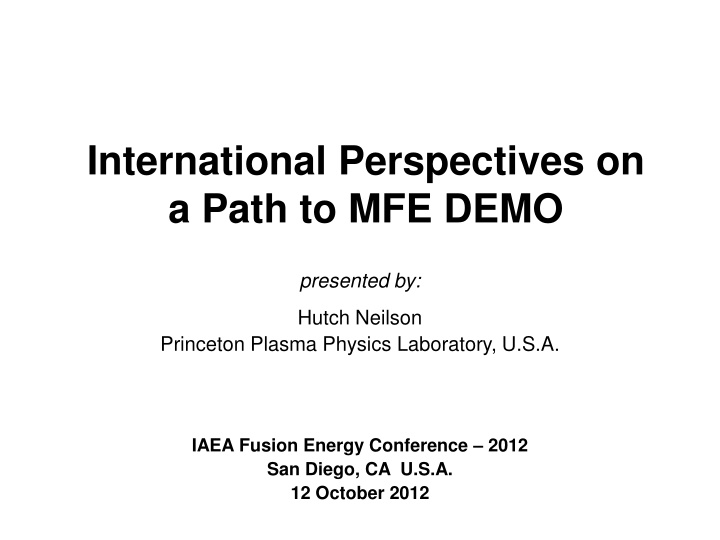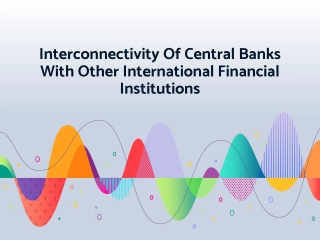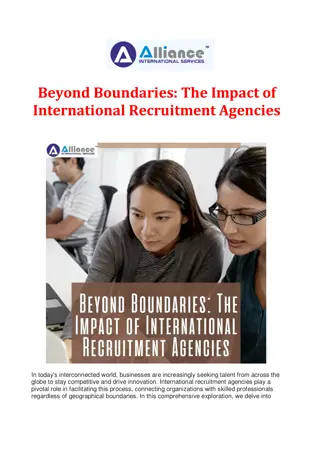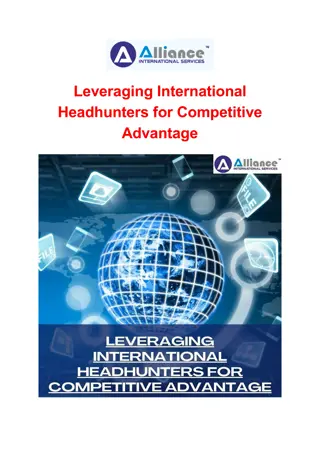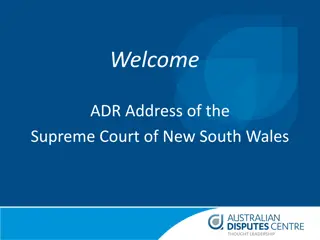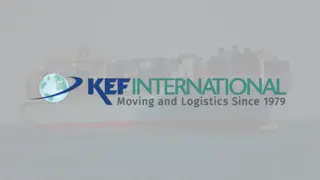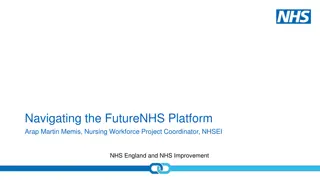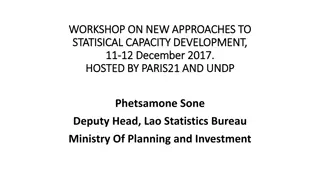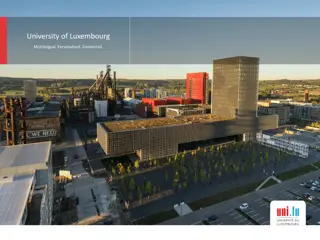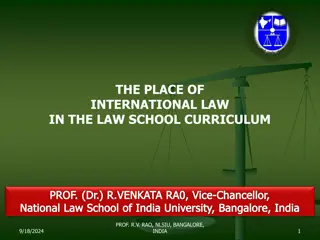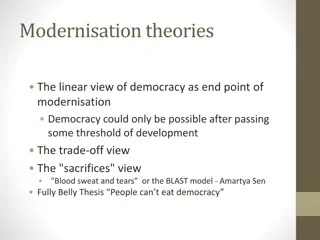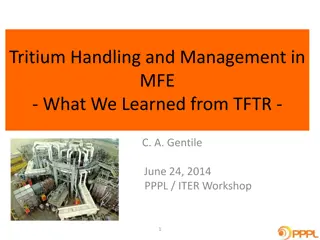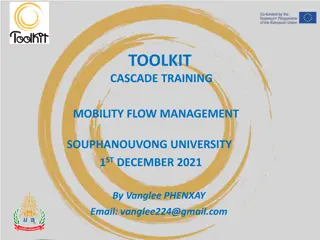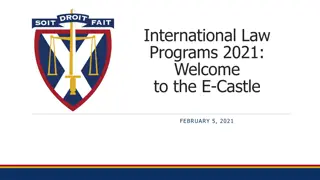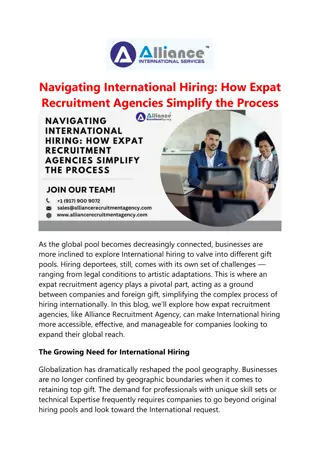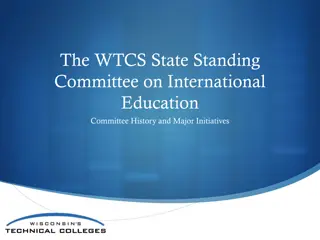International Perspectives on MFE Development
Presented by Hutch Neilson from Princeton Plasma Physics Laboratory, this presentation discusses the transition of MFE, scientific and technical issues for fusion development, and the role of international collaboration in the DEMO era. Topics include plasma confinement, materials technology, and roadmap strategy alternatives.
Download Presentation

Please find below an Image/Link to download the presentation.
The content on the website is provided AS IS for your information and personal use only. It may not be sold, licensed, or shared on other websites without obtaining consent from the author.If you encounter any issues during the download, it is possible that the publisher has removed the file from their server.
You are allowed to download the files provided on this website for personal or commercial use, subject to the condition that they are used lawfully. All files are the property of their respective owners.
The content on the website is provided AS IS for your information and personal use only. It may not be sold, licensed, or shared on other websites without obtaining consent from the author.
E N D
Presentation Transcript
International Perspectives on a Path to MFE DEMO presented by: Hutch Neilson Princeton Plasma Physics Laboratory, U.S.A. IAEA Fusion Energy Conference 2012 San Diego, CA U.S.A. 12 October 2012
Authors M. Abdou, U.S.A G. Federici, EU A. Garofalo, U.S.A. R. Kamendje, IAEA P. Kaw, India K. Kim, Korea R. Kurtz, U.S.A. B. Kuteev, Russia H. Neilson, U.S.A. D. Ward, U.K. H. Yamada, Japan H. Zohm, Germany The authors Represent a community perspective, not the views or policies of their governments. Were invited by IAEA to consult on possibilities & opportunities for a coordinated international approach to DEMO. 2 IAEA FEC-2012, San Diego / 12 October 2012 / SEE 1-1 / H. Neilson
Topics 1. Context 2. DEMO Scientific and Technical Issues 3. Roadmap strategy alternatives 4. Role of International Collaboration 3 IAEA FEC-2012, San Diego / 12 October 2012 / SEE 1-1 / H. Neilson
Context: MFE in Transition ITER: Landmark accomplishments by the world MFE community: Established ITER s scientific & technical (S&T) basis. Developed the design. Formed an international project. Started construction. With ITER, MFE R&D has crossed a threshold to a programme increasingly focused on demonstrating electricity generation from fusion, or DEMO. Making ITER succeed is an imperative for the DEMO era. The question is, what else is needed? 4 IAEA FEC-2012, San Diego / 12 October 2012 / SEE 1-1 / H. Neilson
Scientific and Technical Issues for Fusion Development The R&D required to develop the knowledge base for DEMO has been documented in national studies. The high-level issues are broadly agreed: 1. Plasma confinement in MFE Systems. 2. Plasma Exhaust 3. Materials and technology for power extraction and tritium self-sufficiency. 4. Availability Research on these issues constitutes a world DEMO Programme. 5 IAEA FEC-2012, San Diego / 12 October 2012 / SEE 1-1 / H. Neilson
1. Plasma confinement in MFE Systems. What is the best solution for next steps, DEMO, and fusion plants? Magnetic configuration (tokamak? stellarator? other?) Plasma operating scenario (continuous? pulsed?) 6 IAEA FEC-2012, San Diego / 12 October 2012 / SEE 1-1 / H. Neilson
2. Plasma Exhaust DEMO exhaust conditions will be much harsher than ITER s: 5 ITER s power, similar area. Materials performance degradation under prolonged fusion neutron irradiation. High operating temperatures How will we ensure compatibility with good plasma performance, tritium breeding, and long component lifetimes? Advances beyond ITER are needed to find a solution: Configuration of divertor fields and structures. Operating scenarios, e.g. radiation, temperature, pumping Materials- solids, liquids 7 IAEA FEC-2012, San Diego / 12 October 2012 / SEE 1-1 / H. Neilson
3. Materials and technology for power extraction and tritium self-sufficiency. How will we handle: The damaging effects of fusion neutrons on materials? The harsh thermal conditions? The interactions with plasma? The interactions among various combinations of structural and functional materials? Required research covers a wide span: From basic science to engineering of complex systems. From small test stands to integrated nuclear facilities. Field is at an early stage compared to DEMO needs. 8 IAEA FEC-2012, San Diego / 12 October 2012 / SEE 1-1 / H. Neilson
4. Availability Availability is critical to fusion s economic viability. DEMO must demonstrate the potential for fusion power plants to have high availability. Large advances in Reliability, Availability, Maintainability, and Inspectability (RAMI) beyond the needs of current machines and ITER are needed. High component reliability and longevity. Need data! Capability to inspect for damage and make rapid repairs in situ. Rapid replacement of limited-life components. 9 IAEA FEC-2012, San Diego / 12 October 2012 / SEE 1-1 / H. Neilson
DEMO and the Roadmap to DEMO Socio-economic goals for DEMO are broadly agreed: High level of worker and public safety. Low environmental impact. Closed fuel cycle. High availability Potential for economic competitiveness. Internationally, conditions for DEMO R&D vary widely: Perceived need and urgency for fusion. Priority of funding for fusion relative to other national needs. Perceived risks and uncertainties of fusion. There is no agreed-upon single roadmap to DEMO. 10 IAEA FEC-2012, San Diego / 12 October 2012 / SEE 1-1 / H. Neilson
Elements of a Detailed Roadmap: An Illustration from a Case Study (2007)* 2010 2050 ITER Electric Power ITER TBMs DEMO Construction Triggered by ITER Q=10 Demo DEMO Blanket Tests Satellite Tokamak, Eng. R&D, Simulation In-pile mat l irradiation *Fusion Energy Forum of Japan Fusion neutron irradiation (IFMIF) Courtesy of Prof. K. Okano, Univ. of Tokyo Divertor Test Facility (?) 11 IAEA FEC-2012, San Diego / 12 October 2012 / SEE 1-1 / H. Neilson
Some Roadmaps Envision an Intermediate Fusion Nuclear Facility (FNF) ITER FNF(s) DEMO Fusion Knowledge Base DEMO Science and Technology R&D Range of FNF Missions is Broad International discussion of the S&T issues and strategy for next-step FNFs can help all parties choose the best path. 12 IAEA FEC-2012, San Diego / 12 October 2012 / SEE 1-1 / H. Neilson
Critical Roadmap Strategy Issues* 1 1. The requirements and state of readiness for the various next-step facility options. What is the plan for closing physics and technology readiness gaps for next-step facilities, whether FNF or DEMO? 2. The assumptions used in fusion design codes. What physics and technology assumptions could be used for next-step facilities now being planned? 3. The strategy for plasma exhaust solution development What is the plan for developing the physics and technology of plasma exhaust, including materials, geometry, and operating scenarios? What are the roles of existing devices, ITER, new devices, and next-step fusion nuclear facilities in an optimum development strategy? *GHN, et al., Summary of the International Workshop on Magnetic Fusion Energy (MFE) Roadmapping in the ITER Era; 7 10 September 2011, Princeton, NJ, USA, Nucl. Fusion 52 (2012) 047001. 13 IAEA FEC-2012, San Diego / 12 October 2012 / SEE 1-1 / H. Neilson
Critical Roadmap Strategy Issues 2 4. The strategy for fusion materials development. What are the irradiation testing requirements to satisfy materials pre-requisites for next-step facilities? For DEMO? What is the self-consistent plan for materials development and fusion facility construction? 5. The strategy for blanket development. What is the plan for developing blankets and associated fuel-cycle systems capable of achieving tritium self-sufficiency and harnessing fusion power? How can we derive maximum benefit from ITER TBM? 14 IAEA FEC-2012, San Diego / 12 October 2012 / SEE 1-1 / H. Neilson
The Role of International Collaboration in a Coordinated DEMO Programme International collaboration has been central to fusion for over half a century. IAEA has had an indispensible role in fusion cooperation and is well suited to provide auspices for international collaboration in addressing DEMO issues. A new IAEA DEMO Programme Workshop series will facilitate international collaboration on defining and coordinating DEMO programme activities. Opportunities for beneficial collaboration, e.g. coordination or joint work, will be identified. Workshop output should be usable by any party as input to their planning of possible roadmaps to DEMO. Annual workshops are planned. 15 IAEA FEC-2012, San Diego / 12 October 2012 / SEE 1-1 / H. Neilson
1st IAEA DEMO Programme Workshop UCLA, 15-18 October 2012 Over 70 registered participants from 16 countries and international organizations. Topics: 1. Fusion power extraction and tritium fuel cycle. 2. Plasma power exhaust and impurity control. 3. Magnetic configuration and operating scenario for a next-step fusion nuclear facility. Final Comment It is hoped that the IAEA DEMO Programme Workshop series will be a step toward strengthened international collaboration in the development of fusion that will receive wide support from the fusion community. 16 IAEA FEC-2012, San Diego / 12 October 2012 / SEE 1-1 / H. Neilson
